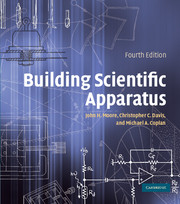2 - WORKING WITH GLASS
Published online by Cambridge University Press: 05 August 2012
Summary
Glass has been called the miraculous material. The ubiquity of glass in the modern laboratory certainly confirms this. Because glass is chemically inert, most containers are made of it. Glass is transparent to many forms of radiation, and its transmission properties can be varied by controlling its composition; all sorts of windows and lenses are made of glass. Because glass can be polished to a high degree and is dimensionally stable, most mirrors are supported on glass surfaces. Glass is strong and stiff, and is often used as a structural material. Considering its mechanical rigidity and density, it is a reasonably good thermal insulator. It is an excellent electrical insulator. Perhaps the greatest virtue of this material is that many glasses are inexpensive and can be cut and shaped in the laboratory with inexpensive tools.
Fifty years ago, most glass laboratory apparatus was produced by the scientist or technician in situ by blowing molten glass or by grinding, cutting, and polishing hard glass. Today the glass industry has grown to such an extent that nearly all components of a glass apparatus are available from commercial sources at low cost. These include all sorts of containers, chemical labware, vacuum-system components, mirrors, windows, and lenses. It is often only necessary for laboratory scientists to acquaint themselves with the range of components available and to acquire the skills needed to assemble an apparatus from these components.
- Type
- Chapter
- Information
- Building Scientific Apparatus , pp. 76 - 92Publisher: Cambridge University PressPrint publication year: 2009

